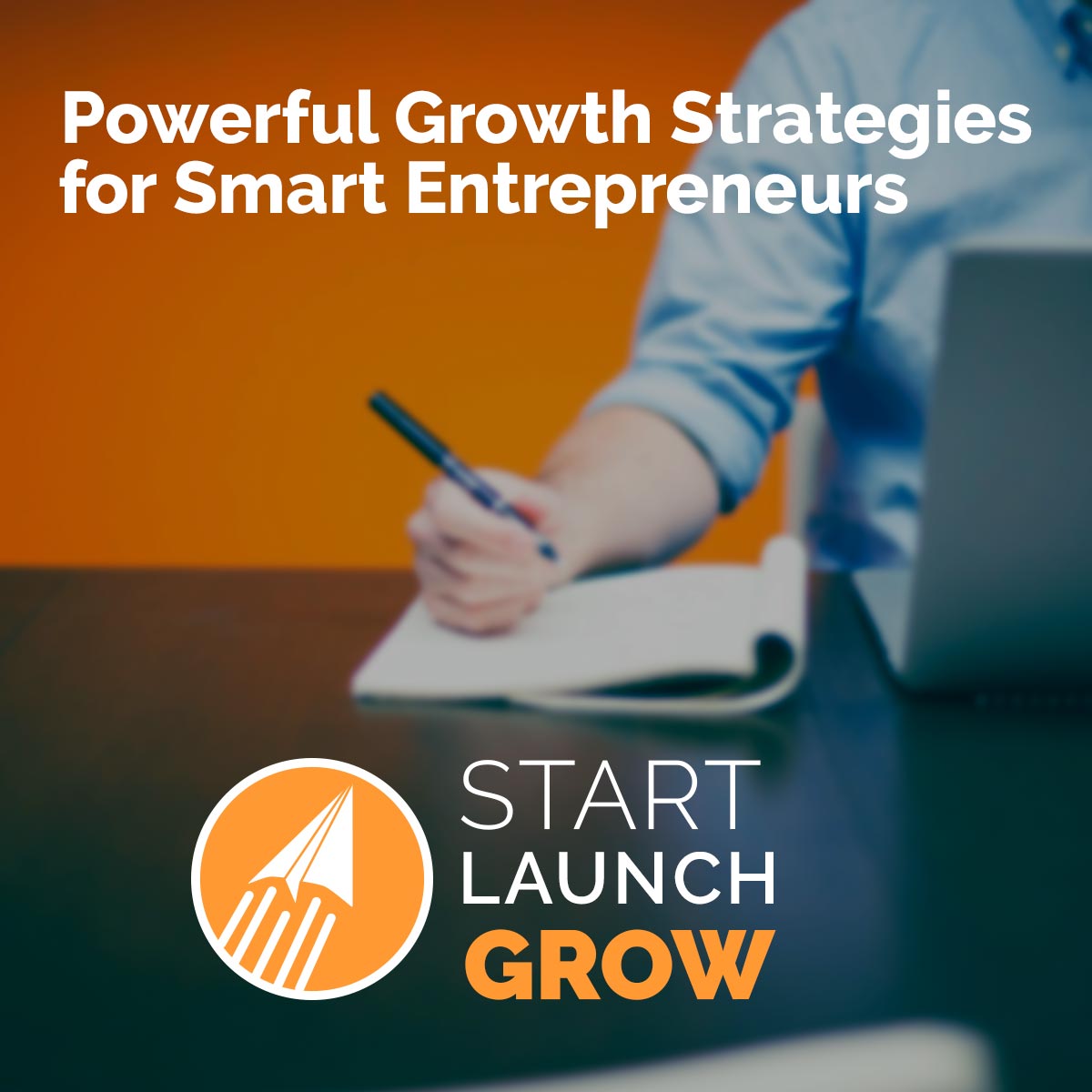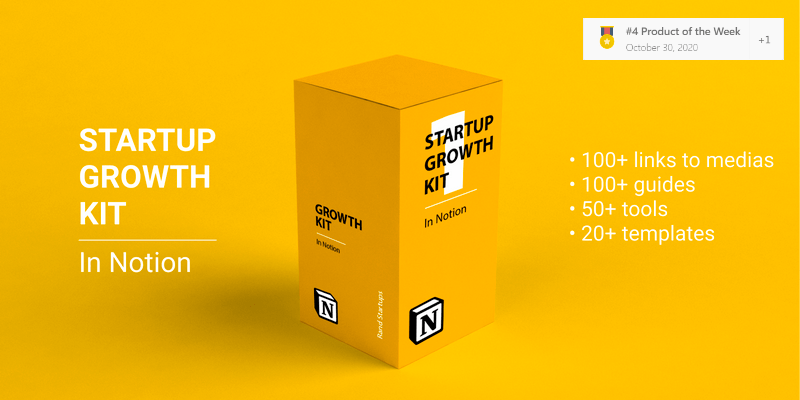Explore web search results related to this domain.

Explore our step-by-step guide to starting your own business in .
Learn the six essential steps to successfully launch your business. Our expert advice and resources will guide you through the entrepreneurial journey.Your business’s first-year accomplishments are merely the prelude to the challenges and triumphs you’ll encounter as you guide the enterprise into its mature stage. You’ve begun to establish your all-important customer base, found and trained your all-important staff and are generating sufficient revenue to invest some profits back into your operation. It’s time to rework your business’s financial plan to ensure the funds needed to power your growth will be available. As a startup, your goal was to achieve profitability and consistent revenue generation.Starting a business is relatively easy but establishing and maintaining its growth and profitability requires ongoing planning, research and risk taking. There are plenty of resources available to point you in the right direction, many of which we’ve listed here. Plus, to make it easier, we’ve laid out a step-by-step guide to help you prepare, launch and grow your own business.Once you’ve determined what your business will sell and have devised a strategy for reaching your potential customers, it’s time to create your organization’s road map for success: your business plan. The plan’s three purposes are to describe the focus of the business, explain how it will be funded and designate who you’ll hire to manage and operate the entity. The SBA provides three free business plan templates: two that take a traditional approach, and one that uses a “lean startup format.”
A small business founder may dream of an entrepreneurial paradise staffed by top talent who will be well-paid and whose long-term allegiance will be secured by perks, such as sabbaticals, nap pods, massage chairs and on-site gyms. But it takes more than an enduring fantasy to transform an ...
A small business founder may dream of an entrepreneurial paradise staffed by top talent who will be well-paid and whose long-term allegiance will be secured by perks, such as sabbaticals, nap pods, massage chairs and on-site gyms. But it takes more than an enduring fantasy to transform an entrepreneurial vision to a startup that has more than a 50/50 chance at survival for the near term, let alone the long term.In any event, financial objectives will be determined by the business launch timeline and the nature of the product or service the company will offer. The odds of a startup becoming a top performer depends on more than a product or service that is deemed by its chosen market to be “a good one.” The startup will require a truly innovative product, a sizable market, and knowledgeable and skilled staff members who are committed to the company’s success.Startups face innumerable barriers during the different phases of company growth. In particular, early stage technology companies face an uphill grind to reach commercialization.In turn, it’s the commercialization of the product or service that assures the financial returns, which justifies development and startup costs. An innovative concept, product or service that might be a forerunner to multiple other products or a product line makes a company’s success in its chosen market more likely than does a single product or service.

You have a great new idea and dreams of being a successful startup. Being successful takes work, get to know how to navigate the startup stages.
Insurance is a major factor in putting your startup on a stable and secure growth path. (And remember that you’ll need workers compensation coverage once you start hiring employees.) Few terms are more synonymous with the startup world than Series A. And with good reason. This stage is a major achievement and marks your company’s first round of venture capital financing. Your company has likely already seen some success if your startup has reached the series A stage.Typically, the goal of Series A funding is to scale your business, increase market share, improve your product’s features, and build a bigger team. This is the startup stage that really starts to put some distance between your typical small business and a successful high-growth organization.The reality is that many startups with a successful seed round can’t generate interest from investors during the Series A round. It takes a lot of work, but your company will be well-positioned for future success and growth if you’re successful in this stage.But first, you’ll have to consider whether the business can sustain more growth and where you’ll get the funds to fuel the expansion. Not every startup will progress to the exit stage. But after the immense success your startup has seen throughout the other five stages, it may be time to decide what to do with your company.

Rob helps entrepreneurs and startup founders achieve their dreams. He is a 25-year startup veteran, serial entrepreneur and former venture capitalist.
Powerful Growth Strategies for Smart Entrepreneurs. Get your Free Blueprint for Raising Funds and your Guide to a One-Page Business Plan Today.As a startup coach and angel investor and former VC, I see a lot of investor pitches. Most of them[...] ... to address your unique challenges and the valuable skills & experiences to jump-start your new company · Dozens of interviews from successful mid-life foundersGet Your Guide to a Simple 1-Page Business Plan Today ... I spent a few hours following Rob’s business plan template to create a brief project plan. It really crystallized my thinking and forced me to articulate everything that has been spinning in my head for more than a year. I shared it with a colleague and it totally worked. Rob really knows his stuff. Marsha Stopa, Blogging Coach & Instructor, BoostBlogTraffic.com ... Startups and small businesses have much to gain from building networks of strategic alliances or partnerships.Rob helps entrepreneurs and startup founders achieve their dreams. He is a 25-year startup veteran, serial entrepreneur and former venture capitalist.


Many leave cushy Big Tech salaries because they no longer want to watch the booming entrepreneurship scene from the sidelines.
He and a cofounder are working on launching a consumer tech product later this year. Rohan Bhide returned to India in January after working at Meta and StubHub in the US. Rohan Bhide · Most Indians grew up wanting to work at a multinational company — but that's changing, Bhide said. ... Freelancing, running your own business, or working for a startup is much more socially acceptable now, because people see the success of other Indian startups.Dhruv Anand, who left Google in the US to move back to India in 2021 to launch an AI startup, said that there were lots of other founders and mentors to help guide him.India's booming market size, internet growth, and post-pandemic spending is driving their decision. They are returning home to improved ease of doing business and better support for founders. Nithin Hassan, 41, has always been fascinated with building something of his own. ... As a child in India, he would get in trouble for dismantling electronics around the house just so he could peek inside. In college, in true startup fashion, he started working on a small business out of his parent's garage in Bengaluru, assembling computers for friends and family.To be sure, not all of these companies will make it big — and some do still stumble, like Oyo and Byju's. But the chaos, where even established startups are trying and failing, makes India a fair playing field for new entrants, Hassan said. Business Insider spoke to six founders about why they have recently returned to India after spending several years, or even an adult life, abroad. ... The health of the economy and interest from investors are fueling the entrepreneurship boom. India's economic growth in 2023 — 8.2% — was the fastest of all large economies worldwide.
Launching a startup is easy. Keeping that startup alive and running, by also accumulating income, is one of the most difficult things you will go through as an entrepreneur. Today, we're going to see a 5-step guide for entrepreneurs on how to launch a profitable startup.
How can your recently established company approach the importance of LinkedIn or the functionality of Airbnb? They were all startup ideas once, and are now multi-million dollar corporations. Even for them, this task wasn't simple. After all, success doesn't come overnight.As an owner and a CEO, you need to establish the specific focus of your work, meaning you need to determine what kind of problem you are dealing with and how you are going to resolve it. What is your startup about? The focus of your startup is equivalent to the foundation of a building. If it’s weak, you won’t be able to build it successfully.Moreover, according to the list, the lack of passion was also the cause of failure, with nine percent of the companies claiming that this was the root of their collapse. As the least common reason for startup failure was pivoting incorrectly or not pivoting at all. These numbers were a part of an analysis of over 100 startup post-mortems. So what do successful startup owners have in common?That way you will be aware of your opportunities, and whether launching a startup will really pay off. One more thing that many entrepreneurs forget: you need to choose the right pricing strategy for your business. A lot of entrepreneurs focus on their target audience, buyer personas, market and competitors without taking enough time about their pricing. ... Now comes the hard part. After checking out every previously mentioned checkpoint on this guide, now it’s time to think about growth and money.

Find out what it takes to create and implement a successful startup growth strategy that enables sustainable growth, success, and stability.
The hardest thing about achieving success in the startup world is being able to put your business on a path that increases its chances of not just surviving, but growing rapidly.The hardest thing about achieving success in the startup world is putting your business on a path that increases its chances of not just surviving but growing rapidly. This means that you need to have a very good growth strategy in place.Thankfully, there have been enough startup success stories over the years, and we’ve seen enough unicorns, to know and understand the elements of a good startup strategy and how they can be implemented successfully. So, let’s take a deeper look at what entrepreneurs need to do to put together a startup growth strategy that will enable their startup to experience sustained success and growth.Your business needs to be able to successfully turn prospects into customers to ensure that you are implementing the next step of your startup growth strategy properly—deciding what key performance indicators (KPIs) to measure.


Everything you need to know to launch a successful enterprise — from the business plan to financing, marketing, and more.
In order to build and run a successful company, you’ll also need to create and fine-tune a business plan, assess your finances, complete all the legal paperwork, pick your partners, research apps for startup growth, choose the best tools and systems to help you get your marketing and sales off the ground …I know from experience that being a small business owner isn’t easy, but with the right plan, you can set up your business for success. And, since less than 8% of entrepreneurs report regretting their decision to open a business, chances are good that you’ll be glad you took this step. Be sure to check and know your requirements, have a solid business plan, and submit your legal paperwork before you take your business live. Once you have a solid business plan and the financing to execute your goals, you’ll be well on the path to launching a successful enterprise.So much of getting a startup off the ground has to do with timing, planning, and the market, so consider if the economic conditions are right to start a company and whether you can successfully penetrate the market with your solution.You probably assumed you’d run your business for the foreseeable future. However, economic uncertainty or unexpected success can both impact the end of your business. In fact, 90% of startups fail, which makes it a wise choice to know under what circumstances you would close down your business.
This is when the startup officially launches their product or service to the market. This is a critical stage for any startup, as it will determine whether or not the business is successful. The fourth and final stage of launching a startup is the growth stage.
The growth stage can be both exciting and challenging, as the startup needs to find ways to sustain their growth while still providing a great ... While the stages of launching a startup may seem daunting, it is important to remember that each stage presents its own unique challenges and opportunities. By understanding the stages and what to expect at each, entrepreneurs can better prepare themselves for success.Launch day is the most important day in a startup's journey. This is the day when the startup launches its product and tries to acquire its first customers. Post-launch is all about growth. This is the stage where ... The stages of launching a startup are critical to success.This is the day when the startup launches its product and tries to acquire its first customers. Post-launch is all about growth. This is the stage where startups focus on scaling their business and expanding their customer base. The stages of launching a startup are critical to success.The hard work has paid off and the product is finally out in the market. However, the post-launch stage is often when the real work begins. At this stage, startups need to focus on growth and scaling. They need to ensure that their product is successful in the market and that they are able to attract more users.

Startup Launch, Step by Step Guides to Boost your Sign-Ups, Growth & Revenue, Successful PH Launches, Learn About Communities, Network with Makers & More
Get hundreds of places where you can post your startup, hundreds guides about launching on Twitter, Product Hunt, Reddit and more. Get ready-to-use templates to write super effective content for advertising or networking. Use the growth tools and services for growing up your audience! The PH Launch Kit is a collection of the best Product Hunt practices, actual tips, and customizable templates with examples that will take you to a successful PH launch – includes 30+ launch templates, lunch checklist, step by step launch guide, 1300+ design assets for ProductHunt, articles & more.The first kit is the ultimate collection of Notion documents and templates, detailing hundreds of niche communities and websites where you can post and promote your startup, as well as guides for Twitter marketing, ProductHunt, Reddit and several other more platforms, and it also includes ready made templates to write effective copy for advertising and networking. The second kit features a comprehensive collection of the current best practices ProductHunt launch, actual tips, and customizable templates with examples of successful products to achieved high engagement and present your product in a professional & clean fashion.Boost your growth, sign ups, revenue with these two awesome compilations of knowledge: the Startup Growth Kit (#4 PH product of the week, Oct 30th 2020) & the ProductHunt Launch Kit! This exclusive package features a complete step by step growth guide, tips, hacks, templates & tools for startup growth hacking including checklists, places/communities to post your startup and network with founders, 100+ guides about startup marketing, reddit marketing, content marketing & more as well as a complete kit for ProductHunt launches, including templates, checklists, step by step guides & more!50+ Startup tools and services including email services, growing services, networking services, startup growth blogs, newsletters, and podcasts.

Launch stage: Acquiring customers and establishing a market presence. Growth stage: Scaling the business and managing growth effectively. Maturity stage: Maintaining innovation and competitive advantage. Navigating the different startup stages is a challenging but rewarding process.
Each stage is critical in its own way, and navigating through them successfully is crucial to ensure the ultimate success of a startup. In this article, we will guide you through the different startup stages, the types of startup stages, factors to consider when choosing a startup stage, challenges faced in each startup stage, and how to overcome them. A startup is a newly established and typically innovative business venture that aims to bring a unique product, service, or technology to the market. Startups are characterized by their focus on growth and scalability, often to disrupt existing industries or create entirely new ones.Launch stage: Acquiring customers and establishing a market presence. Growth stage: Scaling the business and managing growth effectively. Maturity stage: Maintaining innovation and competitive advantage. Navigating the different startup stages is a challenging but rewarding process. Each stage requires different approaches, skills, and resources, and overcoming the challenges is crucial to ensure the ultimate success of the startup.Guide to Startup Stages: Learn the critical stages, challenges, and strategies for success. From ideation to maturity, navigate your startup journey effectively.The entrepreneur needs to hire the right talent that can support the startup’s growth and expansion. Hiring the right talent is crucial to ensure that the startup has the necessary skills, knowledge, and experience to succeed. The maturity stage is the final stage in the startup journey. During this stage, the entrepreneur focuses on establishing the business as a market leader and maintaining its competitive advantage. This stage requires a lot of innovation, adaptation, and strategic planning to ensure continued success.

Cerebras says its cloud-based inference service can process tokens up to 20 times faster than services powered with Nvidia chips. Will Cerebras take Nvidia customers?
Two drivers — especially in combination — could accelerate Nvidia’s growth. These include an increase in the rate of demand growth for AI chips and Nvidia’s successful launch of new chips that deliver a much higher return on investment for customers than previous versions.Nvidia’s growth might accelerate. Nvidia is facing manufacturing difficulties with its newest chip — dubbed Blackwell. Meanwhile, startup Cerebras Systems’ competing design is faster and cheaper than Nvidia’s product, the startup says. If Nvidia can solve Blackwell’s technical problems and continue an annual pace of launching powerful new chips, the company’s enormous software advantage could help accelerate its revenue growth.Cerebras — whose customers include AstraZeneca and the Mayo Clinic — “figured out how to connect and operate as one huge chip,” noted the Journal. Moreover, last week the startup launched a cloud-computing service for AI inferencing — namely responding to natural language user queries — after the AI chatbot has been trained.The AI chip designer dominates the fast-growing market for such chips with a share of more than 80%. So, Nvidia’s slower growth — from 122% in the second quarter to 80% forecast in the third — raises questions for investors:

As a result of Kondury’s efforts, ... The program’s expanded network of mentors and investors provided valuable guidance and connections, helping startups achieve significant growth and success....
As a result of Kondury’s efforts, the accelerator was able to significantly increase its capacity while maintaining a high level of support for its startups. The program’s expanded network of mentors and investors provided valuable guidance and connections, helping startups achieve significant growth and success.Sandeep Unveils New Era in Startup Acceleration, Redefining Growth for Global Ventures.USA - September 19, 2024 — In the fast-paced world of st...By cultivating a collaborative and resource-rich environment, Sandeep ensures that startups under his guidance receive the mentorship, networks, and resources they need to thrive. One of the Most Sought-After Experts in Venture Acceleration · Sandeep’s expertise in building startup accelerators has made him one of the most sought-after names in the venture acceleration space. He has successfully cracked the code for GTM in the U.S.Each startup has unique needs, and my goal is to help them navigate their path to success.” · Sandeep also emphasized the importance of mentorship in the startup ecosystem: “Mentorship is a vital component of a startup’s journey. It’s incredibly fulfilling to guide and support aspiring professionals, helping them unlock their full potential.”
Building-in-public marketing fosters brand loyalty and customer trust, transforming the way modern brands engage consumers.
Opening up the journey to the public can expose founders to intense scrutiny, online criticism, and the risk of competitors copying their ideas. “Building in public means every success and setback is visible," said Nadya Okamoto, founder of period care company August, who has over 5M followers across social media.This openness shifts the customer-brand relationship from transactions to a partnership that emphasizes transparency and authenticity. Done well, founder-led marketing brings customers into the heart of design and development, turning them from passive buyers into invested participants with a stake in the brand's success.Over time, this approach keeps creators returning, drawn by the sense of belonging and mutual support: “Our mission has always been to support creators, but being able to sit down with them face-to-face lets us really understand what they need to succeed,” Wei explained. He sees that creators thrive in settings where they can openly share not only successes but also struggles.Building in public like this yields outcomes that reach beyond basic engagement; it deepens trust and turns casual customers into loyal stakeholders. Founders like Cassey Ho, Nadya Okamoto, Jean Luo, and Eric Wei show that by making customers part of their journey, brands don’t just receive feedback—they cultivate invested communities that believe in the brand’s long-term success.
The app launch experience is your product’s first impression, and as they say, first impressions are everything. From the splash screen to the onboarding process, these initial moments define how…
The app launch experience is your product’s first impression, and as they say, first impressions are everything. From the splash screen to…This guide explores how to create memorable app launch experiences that engage users, build brand loyalty, and set the stage for long-term success.Crafting a memorable app launch experience is about more than just a flashy splash screen. It’s about creating a seamless, intuitive, and engaging journey from the moment users open your app. By focusing on performance, personalization, and accessibility, you can ensure your app not only captures attention but also builds loyalty and drives success.From the splash screen to the onboarding process, these initial moments define how users perceive your app and whether they’ll continue to use it. A well-designed launch experience isn’t just about aesthetics; it’s about delivering functionality, delight, and clear guidance to users.
Uncover the 7 essential steps for a successful startup launch: find your "why", build a strong team, execute, test the market, manage cash, be honest with yourself, and learn from mistakes. Boost your growth and turn your entrepreneurial dreams into reality with these expert tips.
You've been laid off. How can you turn that experience into a successful startup?

An interactive guide full of resources, templates, and more to take your business from startup to scale-up!
HubSpot SEO and blogging expert Aja Frost does a deep-dive into the topic-cluster editorial model and how startups can apply it to win the right keywords for the right pages. ... Full website redesigns are tricky and often lead to lackluster results. Learn how to execute Growth-Driven design and redesign your websites faster for less money and with less stress. Check it out! Not the creative type? Ubersuggest can supply potential keywords to help get you going ... Use this on-page SEO template guide to ensure you are optimizing your keywords to their full potentialBuild your brand and get your startup and product noticed with this kit of PR and Branding guides and templates.A free kit of templates, guides, and inspiration curated for startups and entrepreneurs looking to kickstart their email marketing strategy.Use the Sales Guides and Templates Kit for Startups and Entrepreneurs to hit the ground running with your sales strategy.


TOKYO, September 09, 2024--SalesNow Co., Ltd (Headquarters: Shibuya, Tokyo; CEO: Koki Muraoka; hereinafter "SalesNow"), a provider of the powerful sales database "SalesNow," has announced the "2024 Japan Startup Growth Companies Ranking TOP 100" based on data from Japan's largest database, ...
TOKYO, September 09, 2024--SalesNow Co., Ltd (Headquarters: Shibuya, Tokyo; CEO: Koki Muraoka; hereinafter "SalesNow"), a provider of the powerful sales database "SalesNow," has announced the "2024 Japan Startup Growth Companies Ranking TOP 100" based on data from Japan's largest database, "SalesNow DB (https://salesnow.jp/db)," which covers information on 5.4 million domestic companies.TOKYO, September 09, 2024--(BUSINESS WIRE)--SalesNow Co., Ltd (Headquarters: Shibuya, Tokyo; CEO: Koki Muraoka; hereinafter "SalesNow"), a provider of the powerful sales database "SalesNow," has announced the "2024 Japan Startup Growth Companies Ranking TOP 100" based on data from Japan's largest database, "SalesNow DB (https://salesnow.jp/db)," which covers information on 5.4 million domestic companies.This ranking was compiled by selecting unlisted companies that announced funding between July 1, 2019, and July 1, 2024, and that also increased their number of employees between July 2023 and July 2024. The ranking highlights the growth and future potential of Japan's startup market.By leveraging the latest data, SalesNow leads the industry in providing tools that support corporate growth. View source version on businesswire.com: https://www.businesswire.com/news/home/20240908221764/en/ ... U.S. markets open in 5h 58m ... IOT Samsara Inc. ... GWRE Guidewire Software, Inc.

Atomico, a London-based venture firm that has backed fintech darlings Stripe Inc. and Klarna Bank AB, has raised $1.24 billion for two new funds.
The dual fund strategy, which includes its first dedicated arm for growth capital, is a response to a dearth of late-stage technology financing in Europe, Chief Executive Officer Niklas Zennström said in an interview. According to Atomico data, US startups are 40% more likely to raise capital five years after forming than European peers.
Scaling a startup is complex and challenging, but it's also one of the most rewarding experiences a business leader can have.
Scaling is more than increasing numbers. Your entire business ecosystem needs to evolve to handle exponential growth while maintaining the core values that made your startup successful in the first place. One of the biggest hurdles is resource constraints.It has directly contributed to the development of some of the company's most successful products, such as Google News. These innovations were born out of employees' passion projects and exemplify the power of empowering employees to think outside the box. Now let’s talk tough. No matter what industry you’re in, scaling is expensive. You'll need to invest in new hires, marketing campaigns, inventory and infrastructure. To avoid cash flow problems, create a detailed financial forecast that considers your expected growth trajectory and associated costs.Identify the core values that drive your company, and then build scalable systems and processes that align with those values so they are embedded in every aspect of your growth and never get lost. ... Another challenge is maintaining the company culture within. As your team expands, the tight-knit camaraderie that once defined your startup might start to fade.To avoid these pitfalls, create a scalable growth plan that outlines your goals, strategies and timelines. Your plan should basically be a living document that you regularly review and adjust as your startup evolves.









